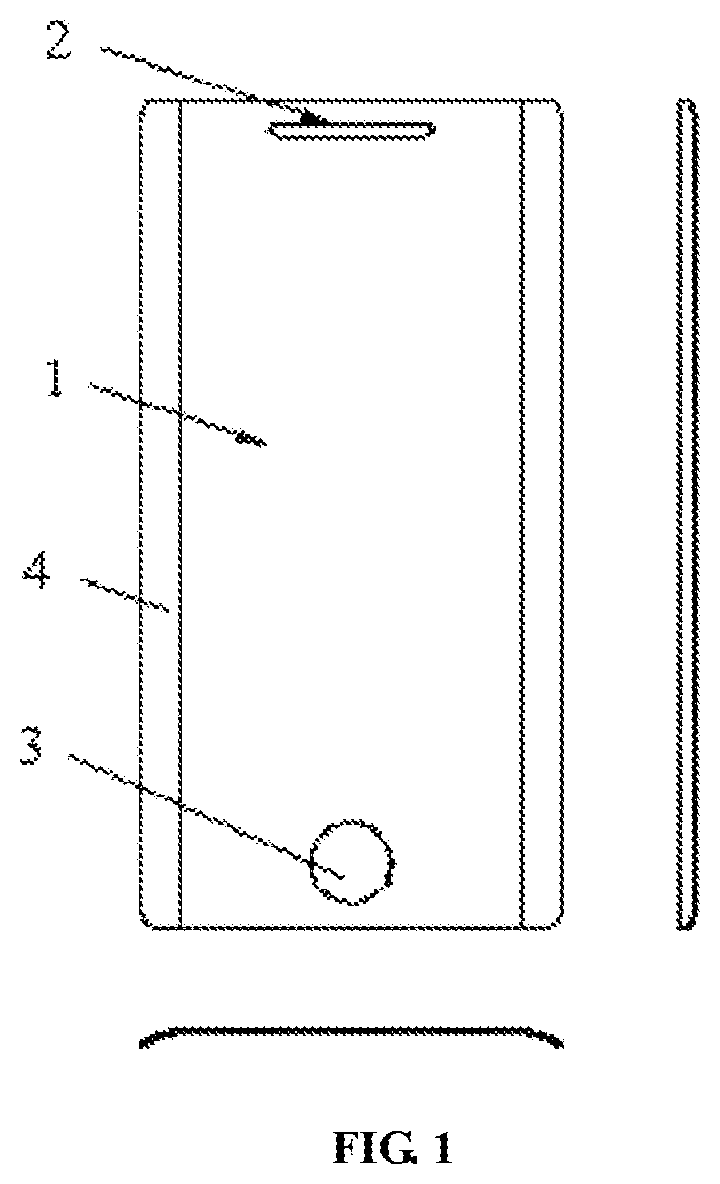Forming method for curved glass
a forming method and glass panel technology, applied in glass reforming apparatus, glass making apparatus, glass making tools, etc., can solve the problems of large quantity of pits, irregular upper and lower surfaces, and easy generation of stress in the resultant glass panel
- Summary
- Abstract
- Description
- Claims
- Application Information
AI Technical Summary
Benefits of technology
Problems solved by technology
Method used
Image
Examples
example 1
[0041]Take a glass plate with a thickness T of 0.7 mm for example. Parameters were set as below.
[0042]During the first through third stages in the staged heating, the temperature set for the upper heating plate was the same as that for the lower one. Temperatures of 360° C., 560° C. and 700° C. were set for the first, second and third stages, respectively. A pressure of 0.02 MPa was applied during each of the first through third stages—which led to a gentle pressure contact between the upper heating plate and the pattern die. In this example, when a pattern die reached the position corresponding to the first stage in the heating furnace, the cylinder drove the upper heating plate to press and heat it. The die stayed in the first stage for 100 s. 100 s later, the die together with the glass plate reached the position corresponding to the second stage in the furnace while a second die loaded with a glass plate reached the position corresponding to the first stage. Such successiveness ...
PUM
| Property | Measurement | Unit |
|---|---|---|
| temperature | aaaaa | aaaaa |
| temperature | aaaaa | aaaaa |
| temperature | aaaaa | aaaaa |
Abstract
Description
Claims
Application Information
 Login to View More
Login to View More - R&D
- Intellectual Property
- Life Sciences
- Materials
- Tech Scout
- Unparalleled Data Quality
- Higher Quality Content
- 60% Fewer Hallucinations
Browse by: Latest US Patents, China's latest patents, Technical Efficacy Thesaurus, Application Domain, Technology Topic, Popular Technical Reports.
© 2025 PatSnap. All rights reserved.Legal|Privacy policy|Modern Slavery Act Transparency Statement|Sitemap|About US| Contact US: help@patsnap.com

